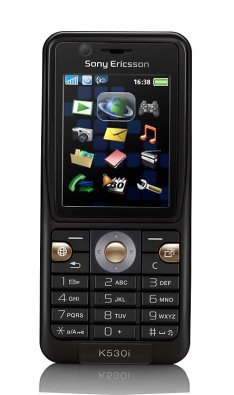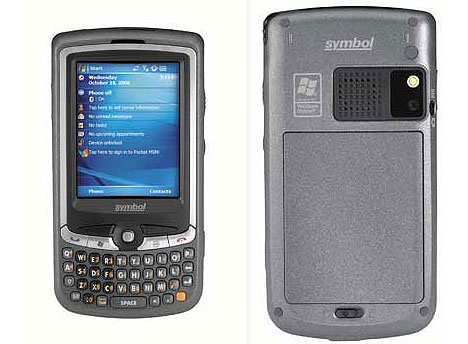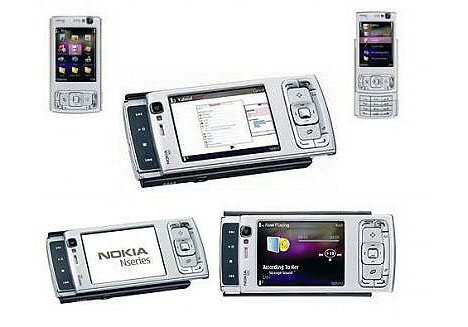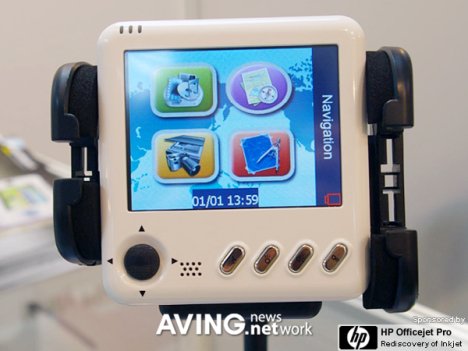
Figure 1. Group of stags (cave painting), Lascaux Caves, France (Art Resources, N.Y.).
GIS through history Some 35,000 years ago, Cro-Magnon hunters drew pictures of the animals they hunted on the walls of caves near Lascaux, France, (fig. 1). Associated with the animal drawings are track lines and tallies thought to depict migration routes. These early records followed the two-element structure of modern geographic information systems (GIS): a graphic file linked to an attribute database.
| 
Figure 2. Tracks of caribou routes in Alaska from April 1985 to December 1986 (U.S. Fish and Wildlife Service). |
| |
Today, biologists use collar transmitters and satellite receivers to track the migration routes of caribou and polar bears to help design programs to protect the animals. In a GIS, the migration routes were indicated by different colors for each month for 21 months (fig. 2). Researchers then used the GIS to superimpose the migration routes on maps of oil development plans to determine the potential for interference with the animals.
Mapmaking
Researchers are working to incorporate the mapmaking processes of traditional cartographers into GIS technology for the automated production of maps.
One of the most common products of a GIS is a map. Maps are generally easy to make using a GIS and they are often the most effective means of communicating the results of the GIS process. Therefore, the GIS is usually a prolific producer of maps. The users of a GIS must be concerned with the quality of the maps produced because the GIS normally does not regulate common cartographic principles. One of these principles is the concept of generalization, which deals with the content and detail of information at various scales. The GIS user can change scale at the push of a button, but controlling content and detail is often not so easy. Mapmakers have long recognized that content and detail need to change as the scale of the map changes. For example, the State of New Jersey can be mapped at various scales, from the small scale of 1:500,000 to the larger scale of 1:250,000 and the yet larger scale of 1:100,000 (fig.3a), but each scale requires an appropriate level of generalization (figs. 3b, c, and d).
| 
Figure 3a. Digital revision of 1:100,000-scale digital line graph data to produce a 1:500,000-scale New Jersey State base map. Paneling and generalization are shown in three stages from 1:100,000 scale to 1:250,000 scale to 1:500,000 scale. |
| 
Figure 3b, c, d. These digital maps of Bergen County, N.J. are all at the scale of 1:500,00. The information content of the maps has been reduced through the process of generalization in two stages, from 1:100,000 scale on the left to 1:250,000 in the center, then from 1:250,000 to 1:500,00 scale on the right. |
Site selection
The U.S. Geological Survey (USGS), in a cooperative project with the Connecticut Department of Natural Resources, digitized more than 40 map layers for the areas covered by the USGS Broad Brook and Ellington 7.5-minute topographic quadrangle maps (fig. 4). This information can be combined and manipulated in a GIS to address planning and natural resource issues. GIS information was used to locate a potential site for a new water well within half a mile of the Somers Water Company service area (fig. 5).
| 
Figure 4. USGS digital line graph map of the State of Connecticut from 1:2,000,000-scale data. The Broad Brook and Ellington 7.5-minute quadrangle areas are outlined in black in the upper middle. | 
Figure 5. Map of the areas covered by the Broad Brook and Ellington 7.5-minute quadrangle showing the Somers Water Company service area at the scale of 1:24:000. |
To prepare the analysis, cartographers stored digital maps of the water service areas in the GIS. They used the proximity function in the GIS to draw a half-mile buffer zone around the water company service area (fig. 6). This buffer zone was the "window" used to view and combine the various map coverages relevant to the well site selection.
| 
Figure 6. Enlarged view of figure 5 showing a half-mile buffer zone drawn around the service area of the Somers Water Company |
The land use and land cover map for the two areas shows that the area is partly developed (fig. 7). A GIS was used to select undeveloped areas from the land use and land cover map as the first step in finding well sites. The developed areas were eliminated from further consideration (fig. 8).
| 
Figure 7. Land use and land cover data for the area bounded by a half-mile buffer zone around the water company service area. | 
Figure 8. Land use and land cover data shown in figure 7 have been reselected to eliminate developed areas. |
The quality of water in Connecticut streams is closely monitored. Some of the streams in the study area were known to be unusable as drinking water sources. To avoid pulling water from these streams into the wells, 100-meter buffer zones were created around the unsuitable streams using the GIS, and the zones were plotted on the map (fig. 9). The map showing the buffered zones was combined with the land use and land cover map to eliminate areas around unsuitable streams from the analysis (fig. 10). The areas in blue have the characteristics desired for a water well site.
| 
Figure 9. Buffer zones of 100 meters are drawn around polluted stream in the water service area. | 
Figure 10. Buffered streams shown in figure 9 area subtracted from areas previously selected with the land use and land cover data. |
Point sources of pollution are recorded by the Connecticut Department of Natural Resources. These records consist of a location and a text description of the pollutant (fig. 11). To avoid these toxic areas, a buffer zone of 500 meters was established around each point (fig. 12). This information was combined with the previous two map layers to produce a new map of areas suitable for well sites (fig. 13).
| 
Figure 11. Points sources of pollution in the water service area are identified and entered into a GIS. | 
Figure 12. Buffer zones of 500 meters are drawn around the point sources of pollution. |
| 
Figure 13. A new map is created in a GIS by eliminating the buffered sources of pollution from the previously selected areas shown in figure 10. |
The map of surficial geology shows the earth materials that lie above bedrock (fig. 14). Since the area under consideration in Connecticut is covered by glacial deposits, the surface consists largely of sand and gravel, with some glacial till and fine-grained sediments. Of these materials, sand and gravel are the most likely to store water that could be tapped with wells. Areas underlain by sand and gravel were selected from the surficial geology map (fig. 15). They were combined with the results of the previous selections to produce a map consisting of: (1) sites in underdeveloped areas underlain by sand and gravel, (2) more than 500 meters from point sources of pollution, and (3) more than 100 meters from unsuitable streams (fig. 16).
| 
Figure 14. Map of surficial geology of the water service area. | 
Figure 15. Selection areas of sand and gravel from the map of surficial geology. |
| 
Figure 16. Map produced by combining the areas composed of sand and gravel with previous selection from figure 13. |
A map that shows the thickness of saturated sediments was created by using the GIS to subtract the bedrock elevation from the surface elevation (fig. 17). For this analysis, areas having more than 40 feet of saturated sediments were selected and combined with the previous overlays.
| 
Figure 17. A bedrock elevation subtracted from surface elevation by a GIS to show the thickness of water-saturated sediment. | 
Figure 18. Potential sites with saturated thickness of sediments greater than 40 feet. |
The resulting site selection map shows areas that are undeveloped, are situated outside the buffered pollution areas, and are underlain by 40 feet or more of water-saturated sand and gravel (fig. 18). Because of map resolution and the limits of precision in digitizing, the very small polygons (areas) may not have all of the characteristics analyzed, so another GIS function was used to screen out areas smaller than 10 acres. The final six sites are displayed with the road and stream network and selected place names for use in the field (fig. 19).
| 
Figure 19. Potential water well sites, roads, streams and place names. |
The process illustrated by this site selection analysis has been used for many common applications, including transportation planning and waste disposal site location. The technique is particularly useful when several physical factors must be considered and integrated over a large area.
Emergency response planning
The Wasatch Fault zone runs through Salt Lake City along the foot of the Wasatch Mountains in north-central Utah (fig. 20).
| 
Figure 20. Map of the area surrounding the USGS Sugar House 7.5-minute quadrangle, Salt lake City, Utah, showing the location of the Wasatch Fault zone. |
A GIS was used to combine road network and earth science information to analyze the effect of an earthquake on the response time of fire and rescue squads. The area covered by the USGS Sugar House 7.5-minute topographic quadrangle map was selected for the study because it includes both undeveloped areas in the mountains and a part of Salt Lake City. Detailed earth science information was available for the entire region.
The road network from a USGS digital line graph includes information on the types of roads, which range from rough trails to divided highways (fig. 21). The locations of fire stations were plotted on the road network. A GIS function called network analysis was used to calculate the time necessary for emergency vehicles to travel from the fire stations to different areas of the city. The network analysis function considers two elements: (1) distance from the fire station, and (2) speed of travel based on the type of road. The analysis shows that under normal conditions, most of the area within the city will be served in less than 7 minutes and 30 seconds because of the distribution and density of fire stations and the continuous network of roads.
The accompanying illustration (fig. 22) depicts the blockage of the road network that would result from an earthquake, assuming that any road crossing the fault trace would become impassable. The primary effect on emergency response time would occur in neighborhoods west of the fault trace, where travel times from the fire stations would be noticeably lengthened.
| 
Figure 21. Before faulting. Road network of area covered by the Sugar House quadrangle plotted from USGS digital line graph data, indicating the locations of fire stations and travel times of emergency vehicles. Areas in blue can receive service within 2½minutes, area in green within 5 minutes, areas in yellow within 7½ minutes, and areas in magenta within 10 minutes. Areas in white cannot receive service within 10 minutes. | 
Figure 22. After faulting, initial model. Network analysis in a GIS produces a map of travel times from the stations after faulting. The fault is in red. Emergency response times have increased for areas west of the fault. |
The Salt Lake City area lies on lake sediments of varying thicknesses. These sediments range from clay to sand and gravel, and most are water-saturated. In an earthquake, these materials may momentarily lose their ability to support surface structures, including roads. The potential for this phenomenon, known as liquefaction, is shown in a composite map portraying the inferred relative stability of the land surface during an earthquake. Areas near the fault and underlain by thick, loosely consolidated, water-saturated sediments will suffer the most intense surface motion during an earthquake (fig. 23). Areas on the mountain front with thin surface sediments will experience less additional ground acceleration. The map of liquefaction potential was combined with the road network analysis to show the additional effect of liquefaction on response times.
The final map shows that areas near the fault, as well as those underlain by thick, water-saturated sediments, are subject to more road disruptions and slower emergency response than are other areas of the city (fig. 24).
| 
Figure 23. Map of potential ground l liquefaction during an earthquake. The least stable areas are shown by yellows and oranges, the most stable by grays and browns. | 
Figure 24. After faulting, final model. A map showing the effect of an earthquake on emergency travel times is reduced by combining the liquefaction potential information from figure 23 with the network analysis from figure 22. |
Three-dimensional GIS
To more realistically analyze the effect of the Earth's terrain, we use three-dimensional models within a GIS. A GIS can display the Earth in realistic, three-dimensional perspective views and animations that convey information more effectively and to wider audiences than traditional, two-dimensional, static maps. The U.S. Forest Service was offered a land swap by a mining company seeking development rights to a mineral deposit in Arizona's Prescott National Forest. Using a GIS, the USGS and the U.S. Forest Service created perspective views of the area to depict the terrain as it would appear after mining (fig. 25).
| 
Figure 25. Prescott National Forest, showing altered topography due to mine development. |
To assess the potential hazard of landslides both on land and underwater, the USGS generated a three-dimensional image of the San Francisco Bay area (fig. 26). It created the image by mosaicking eight scenes of natural color composite Landsat 7 enhanced thematic mapper imagery on California fault data using approximately 700 digital elevation models at 1:24,000 scale.
| 
Figure 26. Three-dimensional image of the San Francisco Bay created to assess the potential of land and underwater avalanches. |
Graphic display techniques
Traditional maps are abstractions of the real world; each map is a sampling of important elements portrayed on a sheet of paper with symbols to represent physical objects. People who use maps must interpret these symbols. Topographic maps show the shape of the land surface with contour lines. Graphic display techniques in GISs make relationships among map elements more visible, heightening one's ability to extract and analyze information.
Two types of data were combined in a GIS to produce a perspective view of a part of San Mateo County, Calif. The digital elevation model, consisting of surface elevations recorded on a 30-meter horizontal grid, shows high elevations as white and low elevations as black (fig. 27). The accompanying Landsat thematic mapper image shows a false-color infrared image of the same area in 30-meter pixels, or picture elements (fig. d). A GIS was used to register and combine the two images to produce the three-dimensional perspective view looking down the San Andreas Fault (fig. 29).
| 
Figure 27. Digital elevation model of San Mateo County, Calif. |
| 
Figure 28. Landsat Thematic Mapper image of San Mateo County, Calif. |
 Figure 29. Perspective view of San Mateo County, Calif. |
Visualization
Maps have traditionally been used to explore the Earth. GIS technology has enhanced the efficiency and analytical power of traditional cartography. As the scientific community recognizes the environmental consequences of human activity, GIS technology is becoming an essential tool in the effort to understand the process of global change. Map and satellite information sources can be combined in models that simulate the interactions of complex natural systems.
Through a process known as visualization, a GIS can be used to produce images— not just maps, but drawings, animations, and other cartographic products. These images allow researchers to view their subjects in ways that they never could before. The images often are helpful in conveying the technical concepts of a GIS to nonscientists.
Adding the element of time
The condition of the Earth's surface, atmosphere, and subsurface can be examined by feeding satellite data into a GIS. GIS technology gives researchers the ability to examine the variations in Earth processes over days, months, and years. As an example, the changes in vegetation vigor through a growing season can be animated to determine when drought was most extensive in a particular region. The resulting normalized vegetation index represents a rough measure of plant health (fig. 30). Working with two variables over time will allow researchers to detect regional differences in the lag between a decline in rainfall and its effect on vegetation. The satellite sensor used in this analysis is the advanced very high resolution radiometer (AVHRR), which detects the amounts of energy reflected from the Earth's surface at a 1-kilometer resolution twice a day. Other sensors provide spatial resolutions of less than 1 meter.
| 
|  |
| Figure 30. One time slice of the vegetation index for part of the globe from AVHRR data. |
Serving GIS over the Internet
Through Internet map server technology, spatial data can be accessed and analyzed over the Internet. For example, current wildfire perimeters are displayed with a standard web browser, allowing fire managers to better respond to fires while in the field and helping homeowners to take precautionary measures (fig. 31).
| 
Figure 31. Wildfires burning for the past 24 hours accessible by means of a web browser and Internet map server GIS technology. |
The future of GIS
Environmental studies, geography, geology, planning, business marketing, and other disciplines have benefitted from GIS tools and methods. Together with cartography, remote sensing, global positioning systems, photogrammetry, and geography, the GIS has evolved into a discipline with its own research base known as geographic information sciences. An active GIS market has resulted in lower costs and continual improvements in GIS hardware, software, and data. These developments will lead to a much wider application of the technology throughout government, business, and industry.
GIS and related technology will help analyze large datasets, allowing a better understanding of terrestrial processes and human activities to improve economic vitality and environmental quality.












































